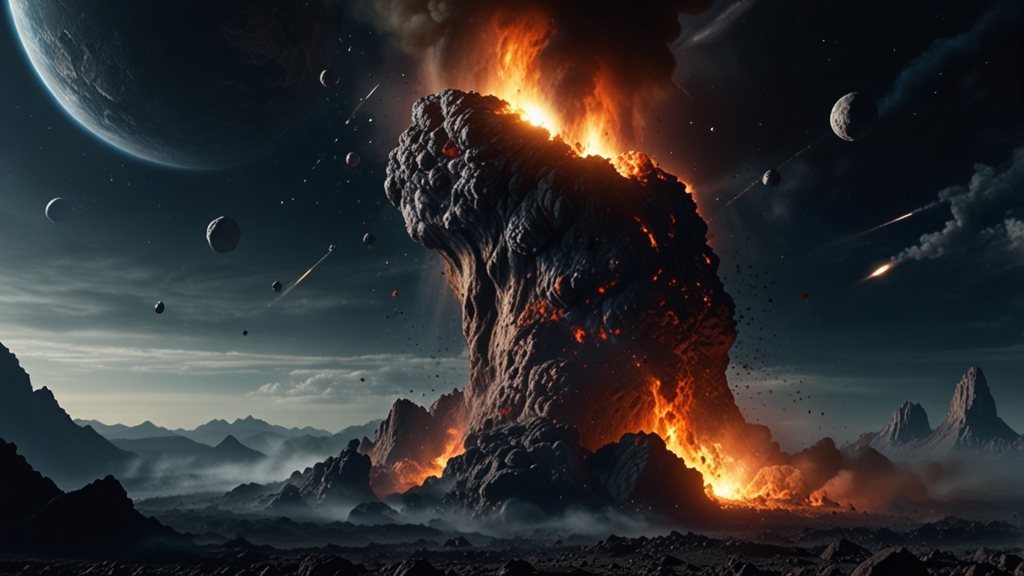Asteroid Apocalypse: How Prepared Are We for a Collision?
Throughout human history, the idea of an asteroid apocalypse has often been relegated to the realms of science fiction. However, the threat of an asteroid collision is a real and present danger that has the potential to cause catastrophic damage. As our understanding of the cosmos improves, so too does our awareness of the celestial bodies that lurk in space, some of which have trajectories that could intersect with Earth.
The Reality of the Threat
The thought of a massive asteroid collision is indeed daunting. As demonstrated by the Chicxulub impactor, which is widely believed to have caused the mass extinction of the dinosaurs 66 million years ago, an asteroid strike can have catastrophic consequences for life on Earth. An impact would not only result in immediate destruction but could also trigger wide-ranging environmental effects, such as a "nuclear winter," leading to long-term global impacts.
"If we are to avoid a potentially catastrophic asteroid impact, vigilance and preparation are essential. This is not merely the domain of scientists and astronomers, but a matter of global safety that requires international cooperation and commitment." - Dr. Amy Mainzer, NASA's Jet Propulsion Laboratory
Finding and Tracking Near-Earth Objects (NEOs)
One of the frontline strategies in averting an asteroid impact is the detection and tracking of Near-Earth Objects (NEOs). Various space agencies, such as NASA's Planetary Defense Coordination Office (PDCO) and the European Space Agency's (ESA) Space Situational Awareness program, are dedicated to identifying and monitoring NEOs. By cataloging these objects and closely observing their orbits, these organizations aim to provide early warnings of any potential threats.
The discovery and tracking of NEOs rely heavily on advanced telescopes and astronomical surveys. Projects like the Pan-STARRS (Panoramic Survey Telescope and Rapid Response System) and the upcoming Large Synoptic Survey Telescope (LSST) are designed to systematically scan the sky for any potentially hazardous asteroids. With each observation, astronomers refine their predictions of an asteroid's path and its likelihood of impacting Earth.
Mitigation Strategies
Should an asteroid on course for Earth be detected, there are several proposed mitigation strategies. Some of the most notable ones include:
Kinetic Impactors
One proposed method for deflecting an asteroid is to use a kinetic impactor. This involves sending a spacecraft to collide with the asteroid at high speed in the hopes of altering its trajectory. NASA's Double Asteroid Redirection Test (DART) mission, set to launch in 2021, aims to test this concept by targeting the binary asteroid Didymos and its moonlet, Didymoon.
Gravity Tractors
Another approach is the gravity tractor method, which involves positioning a spacecraft near the asteroid. The gravitational pull between the spacecraft and the asteroid would gradually alter the asteroid's path. This method would require significant time and precise calculations to achieve the desired effect.
Nuclear Options
Though controversial, using nuclear devices to either deflect or disrupt an asteroid is also under consideration. This method could potentially offer the most immediate and forceful means of altering an asteroid's course. However, the risks and uncertainties associated with detonating a nuclear device in space are significant and require careful evaluation.
"The key to planetary defense is early detection and taking proactive steps to mitigate the threat. Waiting until the last minute is not an option when dealing with potentially devastating impacts." - Dr. Lindley Johnson, NASA's Planetary Defense Officer
International Collaboration
Given the global ramifications of an asteroid impact, international collaboration is essential for effective planetary defense. Several initiatives, like the United Nations' Committee on the Peaceful Uses of Outer Space (COPUOS) and the Space Mission Planning Advisory Group (SMPAG), encourage cooperation between nations in sharing data, resources, and strategies for NEO detection and deflection.
Such cooperative efforts help pool scientific expertise and technological resources, ensuring a coordinated response should a potential threat arise. It's a collective effort to safeguard our planet from a celestial catastrophe.
Conclusion
While the risk of an asteroid collision remains low, the consequences of such an event are potentially devastating. Therefore, it is prudent to invest in research and technologies aimed at detecting, tracking, and mitigating NEO threats. Vigilance, preparation, and international cooperation are essential to defend our planet from an asteroid apocalypse and ensure the continued safety and prosperity of life on Earth.






